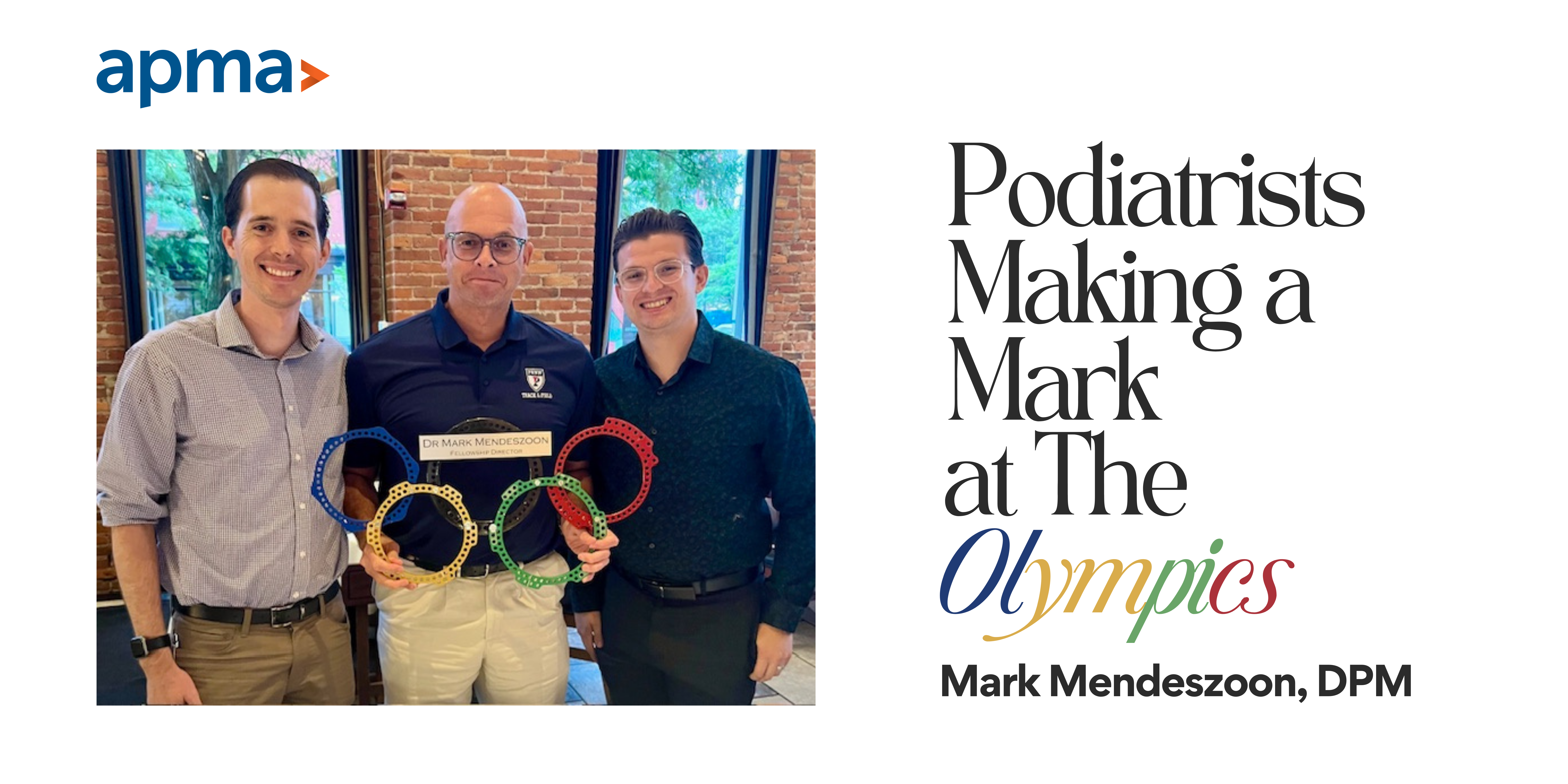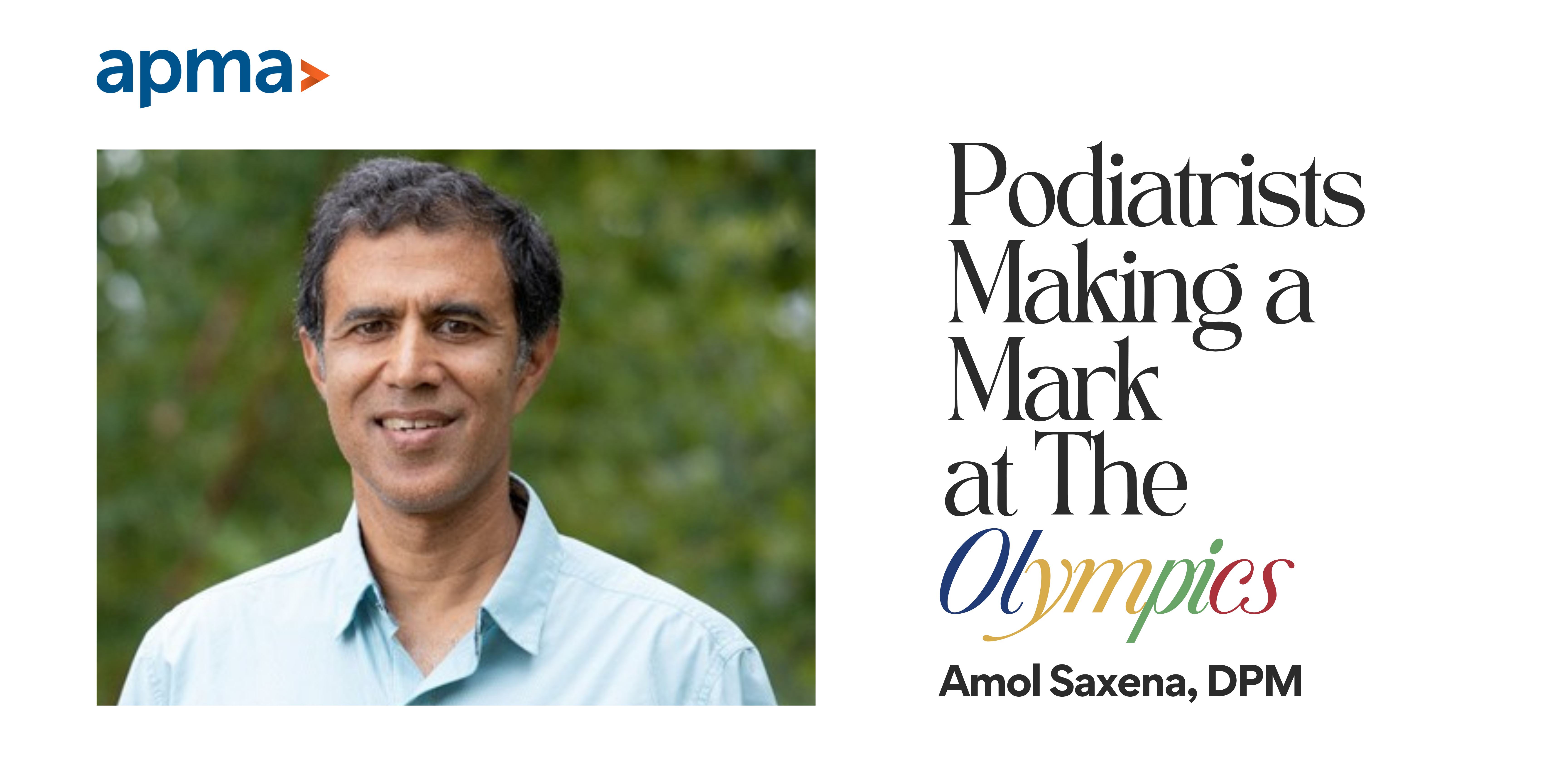Podiatrists Making a Mark at the Olympics

Tell us about the athletes you have treated in the past.
Dr. Mendeszoon: I have been involved with Olympic athletes in different sports but mainly track and field, which was my sport when I competed. I have been fortunate to treat Olympic hopefuls and Olympians since 2008. I have been involved with direct medical care for numerous athletes from the United States, European countries, and Caribbean countries. Several of the track athletes have won Olympic medals, including gold.
How is working with these Olympic athletes different from working with your other patients?
Dr. Mendeszoon: Any athlete is a challenge to work with, especially high-level athletes such as collegiate, Olympic hopefuls, and professional athletes. The higher the level of the athlete, the more involved it becomes to treat them. Not only will you deal with the athlete personally to help them get through their injury, but in some instances, you have to deal with parents, coaches, and even agents. You really have to wear many hats when treating high-level athletes. You have to get them through the disappointment of the injury, potentially get their overuse or acute injury resolved, and keep them physically fit if possible by cross-training and understanding the sport that they need to do. Collaborating with trainers, therapists, and colleagues in the medical professions to keep them engaged. Emphasizing diet when injured. And in many situations when the athletes are injured, I work directly to develop a rehabilitation workout program along with their coaches and managers.
How did you become interested in sports medicine, and how did you become involved with the Olympics?
Dr. Mendeszoon: I have been involved with athletics since I was a little kid and participated in track and field for over 50 years. I competed at the Division One collegiate level on a scholarship and then competed post-collegiately. After I ended my career, I became involved with collegiate coaching at the Division Three and Division One levels. Then, when I established my practice, I started coaching at our local high school and initiated the indoor track program, which was unusual in Ohio, and then started the Maple Leaf track club with my colleague. With the track club, we were able to send a few hundred student-athletes to college on scholarships (we were able to obtain a few million dollars in scholarships for the athletes we worked with). My wife and I started Achilles Running Shop in 2006, which sells running shoes, clothing, and running-related products. In 2008, I was able to be part of a new Olympic training center where I designed, created the facility, and established the Track program and developed the faculty members. In addition, I’ve been a consultant and a medical consultant at that facility.
What is your favorite part of working with these athletes? What is the most challenging part?
The best part of working with athletes is seeing them back in competition competing at 100 percent. The most challenging part is sharing the disappointment if they get re-injured.
If you had been an Olympic athlete, what would your sport have been?
Dr. Mendeszoon: Track and field; 400 hurdles.
What else should we know?
Dr. Mendeszoon: I suffered many injuries during my athletic career and retrospectively have seen how poorly I have been treated, which had a major impact on me. I vowed once I went to podiatric medical school that I would take those bad experiences and do everything possible to help my patients get back to competition. I have an open-door communication policy with my athletes, and they know I am always available 24/7. I have even opened up my house for athletes to come for treatment, and many athletes who come from out of town stay in my house during recovery before they go back home. I’ve been very fortunate and blessed to have athletes of all levels trust me with their care. In two weeks, I’ll be attending the Paris Olympic Games and have been fortunate to see athletes who I have consulted with, treated, or helped participate in the summer Olympic Games since 2008. I have been to London, Rio, supposed to go to Japan, but due to covid, couldn’t do that, and now Paris, praying and hoping I can go to LA in 2028.

Tell us about the athletes you have treated in the past.
Dr. Saxena: I’ve treated more than 100 Olympians and operated on three gold medalists. I’ve been in practice since 1989, volunteered at Olympic trials, traveled with some of the teams, and I’ve been a consulting team podiatrist for Team New Balance On Running, and treat Nike and Hoka athletes competing at the Olympics.
How is working with these Olympic athletes different from working with your other patients?
Dr. Saxena: You get them in quick and try to get them better quick—you don’t necessarily do the watchful waiting you might do with another patient. We introduce things sooner, like shockwave therapy, and if surgery is the most predictable outcome, we may do that sooner than in another patient.
How did you become interested in sports medicine?
Dr. Saxena: I was an injured runner and got treated by two saints of orthopedics. They took care of me from junior high to college, and I wanted to help injured athletes the way they were. I was particularly interested in shoes and treating runners, and that wasn’t something they were as interested in, so they suggested that I become a sports medicine podiatrist.
What’s your favorite part of working with these athletes? What is the most challenging part?
Dr. Saxena: My favorite thing is getting to the starting line and getting them to the finish line and victory. In 2016, I had six patients win medals, so that was a peak. In this Olympics, I’ll probably have at least three or four.
The most challenging thing for most podiatrists is to check your ego at the door and realize what is at stake. For these athletes, it’s not just winning or getting back to competition, you have coaches, agents, family, all depending on that athlete. You have to realize there are a lot of players involved.
If you had been an Olympic athlete, what would your sport have been?
Dr. Saxena: I was a runner, a marathoner, but I was just fast enough to carry the medical bag, not to compete!